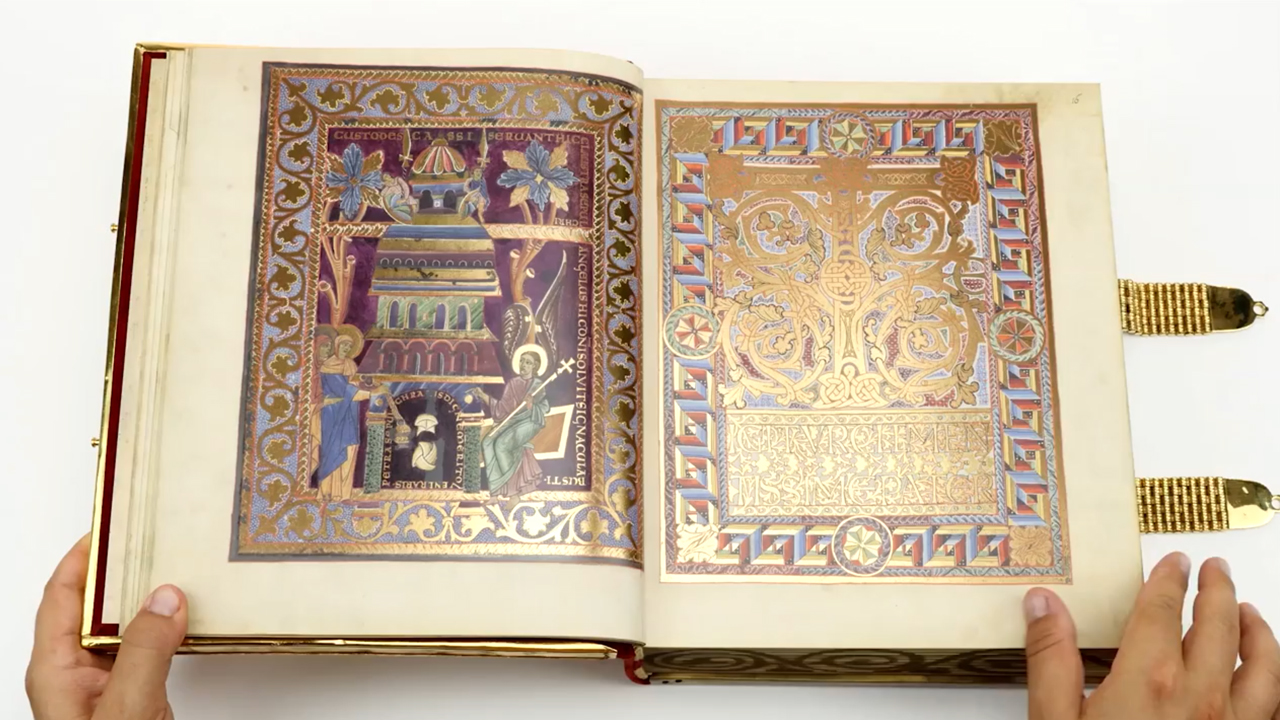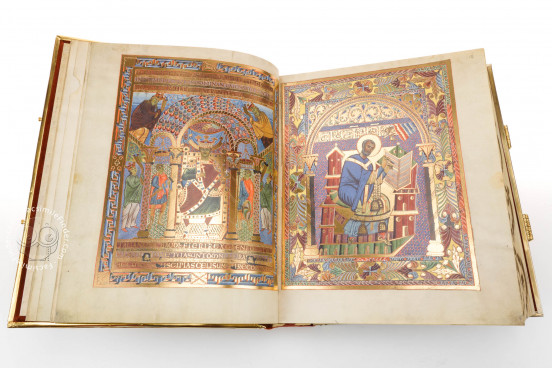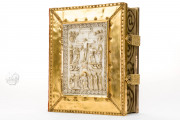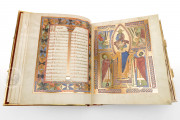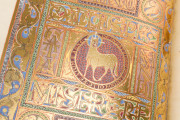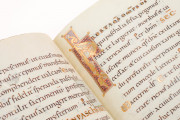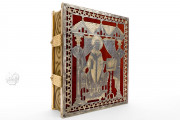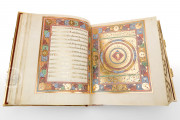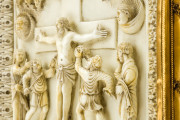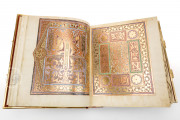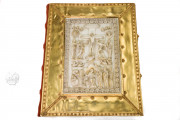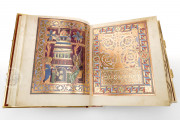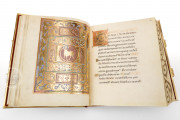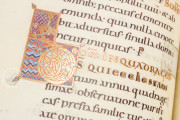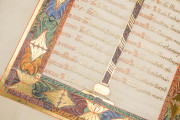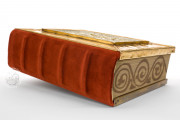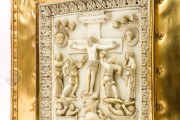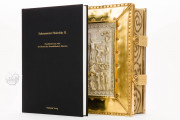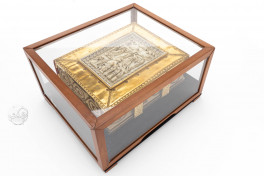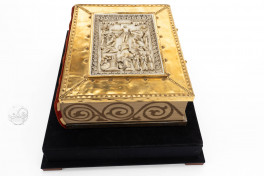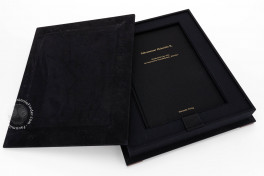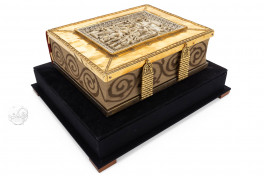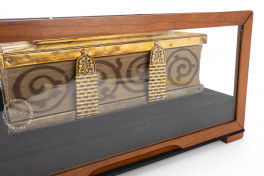Produced in the early eleventh century at St. Emmeram’s abbey in Regensburg, the Sacramentary of Henry II is a gem of Ottonian illumination created for the last Emperor of that dynasty. Also known as the Regensburg Sacramentary, this liturgical manuscript contains fourteen full-page illuminations, over three hundred interlace initials, and broad ornamental frames. With an iconographic program centered on secular power lavishly enhanced with gold and purple, this prayer book is worthy of an Emperor. Henry II’s ascension had been marked by intrigue and struggle, and the political claims of this Sacramentary are as ambitious as its decoration.
Intended for use by the priest at Mass throughout the year, the Sacramentary contains a twelve-page liturgical calendar with the lists of feast days for each month of the year, the Canon of the Mass, the Common Preface, and the Collects. Bamberg Cathedral had been founded by Henry II in 1002, and the inclusion of this book among the many imperial endowments would have ensured the Emperor’s symbolic presence upon the altar of the Cathedral long after his death.
Art as Imperial Propaganda
Restricted to the beginning of this luxury book, the ornamental program is effective visual propaganda for Henry II’s rule. The decorative cycle begins with an initial page and a twelve-page calendar and continues with full-page illuminations of the coronation of Henry II, Henry II enthroned, a portrait of the sixth-century pope Gregory the Great, two initial pages, three display pages of the Preface, the Crucifixion, the Women at the Tomb, and an initial page for the opening of the Canon of the Mass. The rest of the Canon is enclosed in broad acanthus frames.
Finally, two more initial pages open the remaining text of the services. Riotous with densely packed patterns, vibrant color, and opulent gold interlace, the decorated pages appear wrought from precious metals and gems. The program is particularly notable for the opening that shows the young ruler receiving his crown directly from the hand of Christ.
Some byzantine stylistic elements are present, but overall, the ornamental program was closely modeled on the Codex Aureus of St. Emmeram, an important ninth-century Gospel Book made at St. Emmeram’s abbey for Emperor Charles the Bald (Munich, Bayerische Staatsbibliothek, Clm 14000). As such, the Sacramentary presents Henry II as a direct heir to the Carolingian tradition, and legitimizes his claim to the Empire in secular and divine terms.
Precious Matter for Sacred Words
The scriptorium of St. Emmeram’s used scripts and chrysography to distinguish hierarchies in this highly ornate text. The main text is written in Caroline minuscule, with the display scripts and tituli in Rustic Capitals and the first lines of readings in Uncial.
The lettering of the Calendar and the Canon of the Mass is in gold, and the Preface is executed in a lavish display script of gold and silver ink on purple ground. Each Office opens with a goldleaf interlace initial on a patterned background and a line in gold and red ink, and continues in black ink.
A Gifted Treasure
As indicated by tituli, the Sacramentary was produced while Henry II was still king, before his crowning as Emperor in 1014. Most likely, this book was donated at the same time as the Pericopes of Henry II (Munich, Bayerische Staatsbibliothek, Clm 4452), upon the consecration of Bamberg Cathedral in 1012. In 1803, following secularization, the Sacramentary of Henry II became part of the Bavarian State Library.
The extensive decoration of this manuscript extends to its binding. The front cover is formed of an elegant ivory relief featuring the Crucifixion in the upper register and the three women at the Tomb in the lower register, surrounded by an acanthus frieze.
The ivory was likely made in Lotharingia a short time before the sacramentary itself. On the back cover is an image of Gregory the Great in gilded openwork silver.
We have 1 facsimile edition of the manuscript "Sacramentary of Henry II": Sakramentar Heinrichs II facsimile edition, published by Faksimile Verlag, 2010
Request Info / Price
